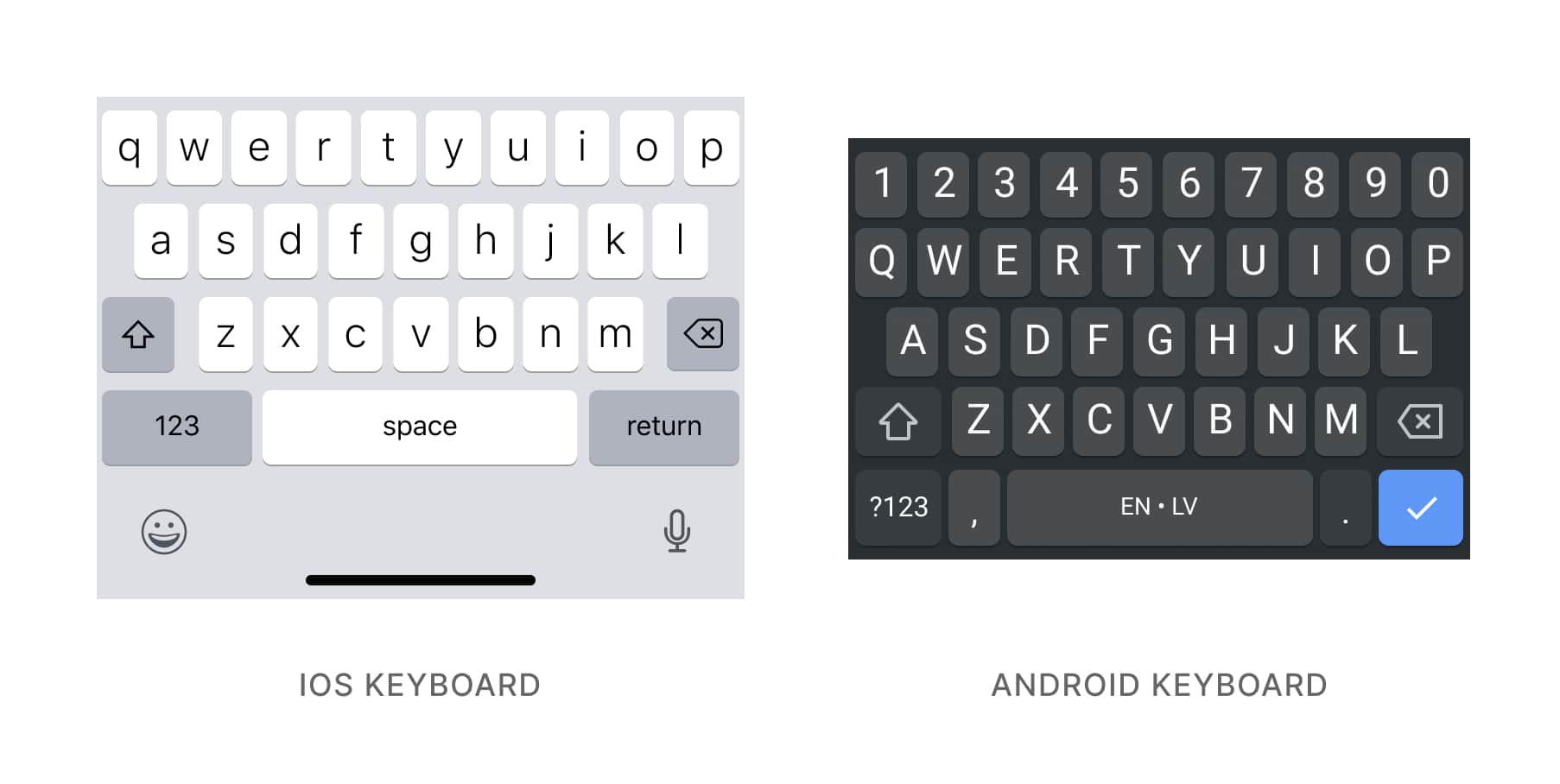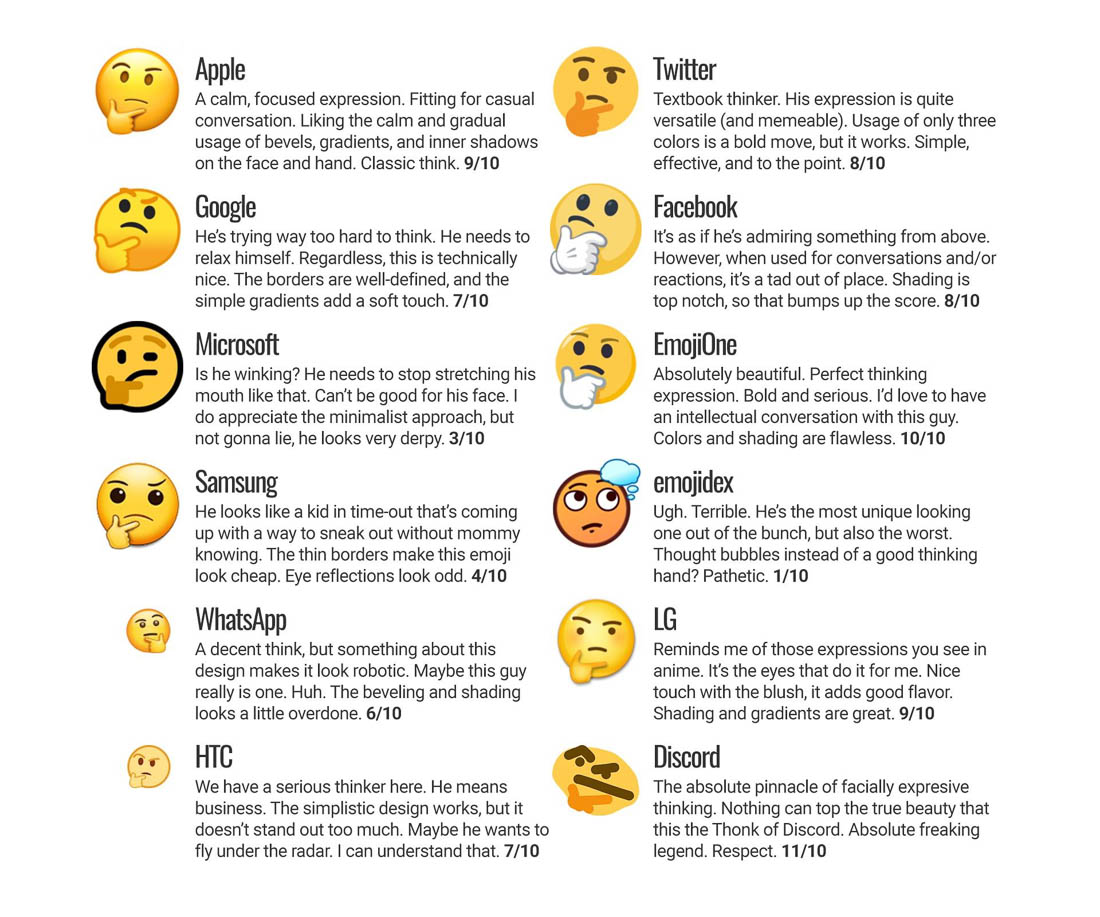Emoji vibes and why they matter
Lately, I’ve been bugged by interested in how emojis have different vibes depending on what platform you’re on. For example, the joy emoji looks different depending on what app or operating system the viewer is using. If you send a joy emoji on your iPhone but your friend reads it on a PC, you’ll see different imagery. I’m talking about this:

The vibes are different from one emoji to another, even though they’re supposed to be the “same”. Why is it like this, and how does this impact the way we communicate with each other? In this essay, I’ll discuss why emoji are inconsistent across platforms, and argue that these differences are disruptive to the communicative ends that emoji serve. (And yeah, I’m writing this like a college essay.)
Emoji are a solution to a digital problem
Emoji are a tool for communicating tone and body language which are otherwise missing from digital communication. Some linguists argue that they’re a type of gesture,
Originally, use of emoji grew throughout Japan in the 90’s and 00’s and were systemized over time (however clunkily) by Japanese cell carriers as texting grew in popularity. [[ need a citation ]] Nowadays, emoji maintenance is handled by the Unicode Consortium, who also makes decisions about which emojis are included across devices. You can actually submit your own ideas for an emoji, and one podcast even has a fascinating case study on the process of getting the 🧘 lotus pose emoji submitted to the emoji corpus.
Why they’re different across platforms
So, the Unicode Consortium decides which emoji should be included in standard keyboards across devices. The thing is, though, there’s no strict universal standard for keyboards in general. Each company who needs a keyboard system is making their own – this is why keyboards look different on Apple’s iOS vs. Google’s Android, from groupings of keys down to the font.

As long as an A looks like an A, these companies are free to develop their keyboards to use whatever font. Similarly, the Unicode Consortium has no specifications for what a joy emoji looks like beyond a basic description. It’s then up to the platform owners of those keyboards – Microsoft, Google, Twitter, etc. – to develop how each emoji shows up on their keyboards. Each company has their own team of illustrators drawing out each emoji. This is why they look different, and this is why the vibes are inconsistent.
The vibes are different: science edition
Now we know why emojis are different with each platform, but it could be argued that the visual differences are fairly subtle. Are the vibes different enough to matter?
One study set out to see how gender influences interpretation of emoji, but found that the platform of emoji use was a much bigger source of communication breakdown.
This whole idea of visual distinctions leading to different vibes is widespread. There was one meme that proliferated Tumblr back in the mid-2010’s where people rated different emojis across platforms, which eventually resulted in a completely dedicated subreddit as internet trends often do. Implicit in this genre of meme is the idea that depending on the platform, the vibe is different, and there’s a potential for a break in interpretations, however subtle.

Emoji as a linguistic tool
So far I’ve laid out how emoji are used, why different emoji styles exist, and that those differences are not just in my head. This is the part where I argue that the inconsistent system of emojis is disruptive to their use as a linguistic tool. This is the section I feel least confident about as far as evidence goes, but have the strongest feelings about.
Chances are that the current system – that emoji differ across devices – is “good enough”, linguistically speaking. I have no concrete evidence of it being linguistically disruptive, other than the frustration I personally feel when the vibez are thrown by the wrong manifestation of emoji. It feels like I’m being forced to codeswitch for no reason other than the fact that a different company owns that particular context. The point is: it introduces friction in building a common language with another person.
For example, take lol. For someone who is Extremely Online, there are a million variations, each with subtle differences in meaning depending on what punctuation you use, who you are sending it to, and where it shows up in your message:
- lol
- LOL
- Lol
- lolol
- looool
Could you imagine a world where you send “lol” from your iPhone, but Friend A on Android sees it as “LOL” and Friend B on PC sees “loool”? That sucks. Yet, this is the world of emojis. I am horrified that a handful of companies have power over how nuanced I can get with my language.
What’s next?
One thing I’ve left out of this investigation are custom emojis, especially within smaller community-oriented platforms like Slack and Discord. I have a hunch that custom emojis contribute to a tighter-knit community, with a major reason being that custom emojis are identical regardless of platform or context. I’m collecting small pieces of evidence for this, and plan on building this out more in custom emoji when I feel like I have enough of a hypothesis.
Thanks for reading!